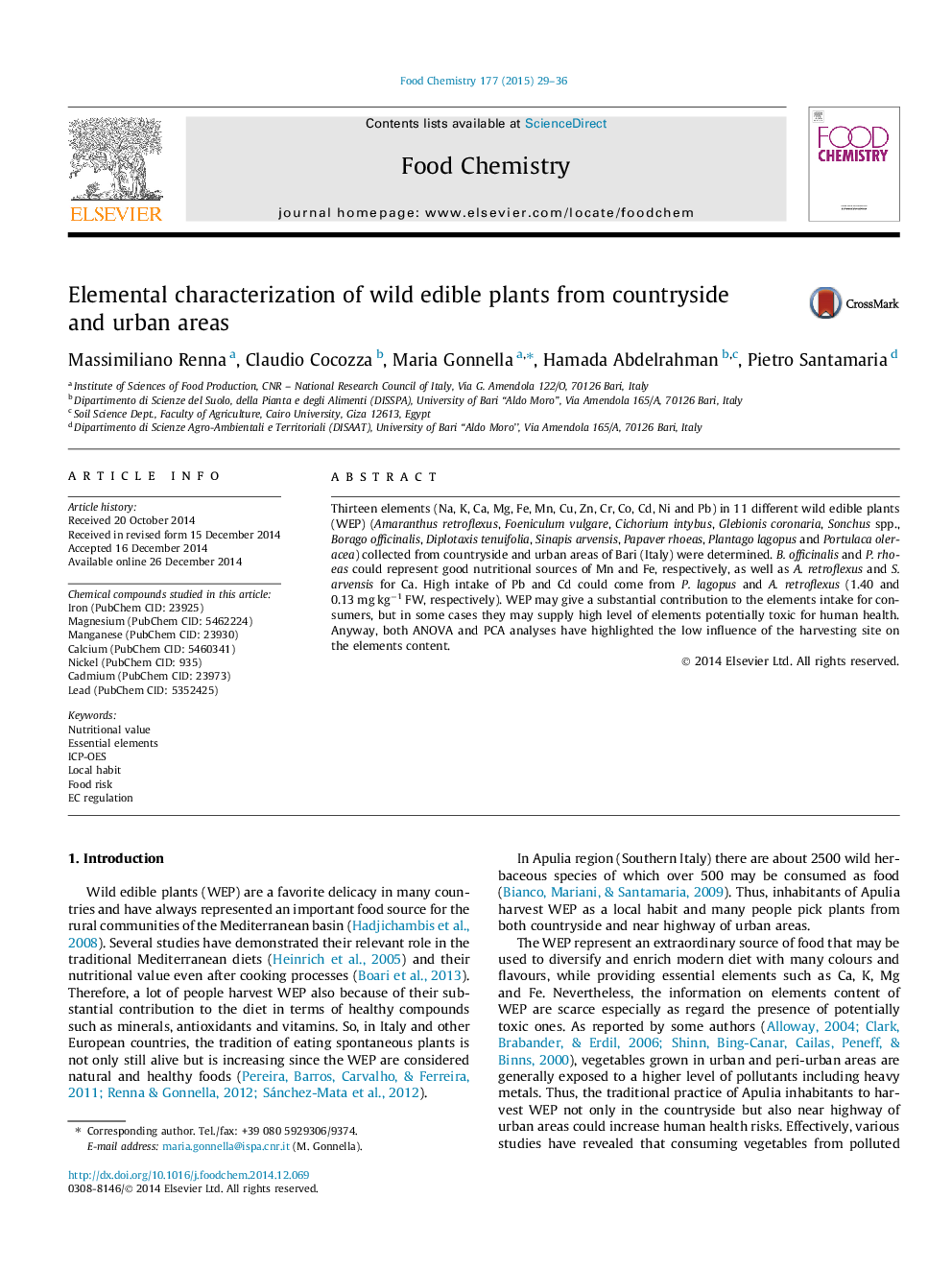| Article ID | Journal | Published Year | Pages | File Type |
|---|---|---|---|---|
| 7592328 | Food Chemistry | 2015 | 8 Pages |
Abstract
Thirteen elements (Na, K, Ca, Mg, Fe, Mn, Cu, Zn, Cr, Co, Cd, Ni and Pb) in 11 different wild edible plants (WEP) (Amaranthus retroflexus, Foeniculum vulgare, Cichorium intybus, Glebionis coronaria, Sonchus spp., Borago officinalis, Diplotaxis tenuifolia, Sinapis arvensis, Papaver rhoeas, Plantago lagopus and Portulaca oleracea) collected from countryside and urban areas of Bari (Italy) were determined. B.officinalis and P.rhoeas could represent good nutritional sources of Mn and Fe, respectively, as well as A.retroflexus and S.arvensis for Ca. High intake of Pb and Cd could come from P.lagopus and A.retroflexus (1.40 and 0.13 mg kgâ1 FW, respectively). WEP may give a substantial contribution to the elements intake for consumers, but in some cases they may supply high level of elements potentially toxic for human health. Anyway, both ANOVA and PCA analyses have highlighted the low influence of the harvesting site on the elements content.
Keywords
Related Topics
Physical Sciences and Engineering
Chemistry
Analytical Chemistry
Authors
Massimiliano Renna, Claudio Cocozza, Maria Gonnella, Hamada Abdelrahman, Pietro Santamaria,
